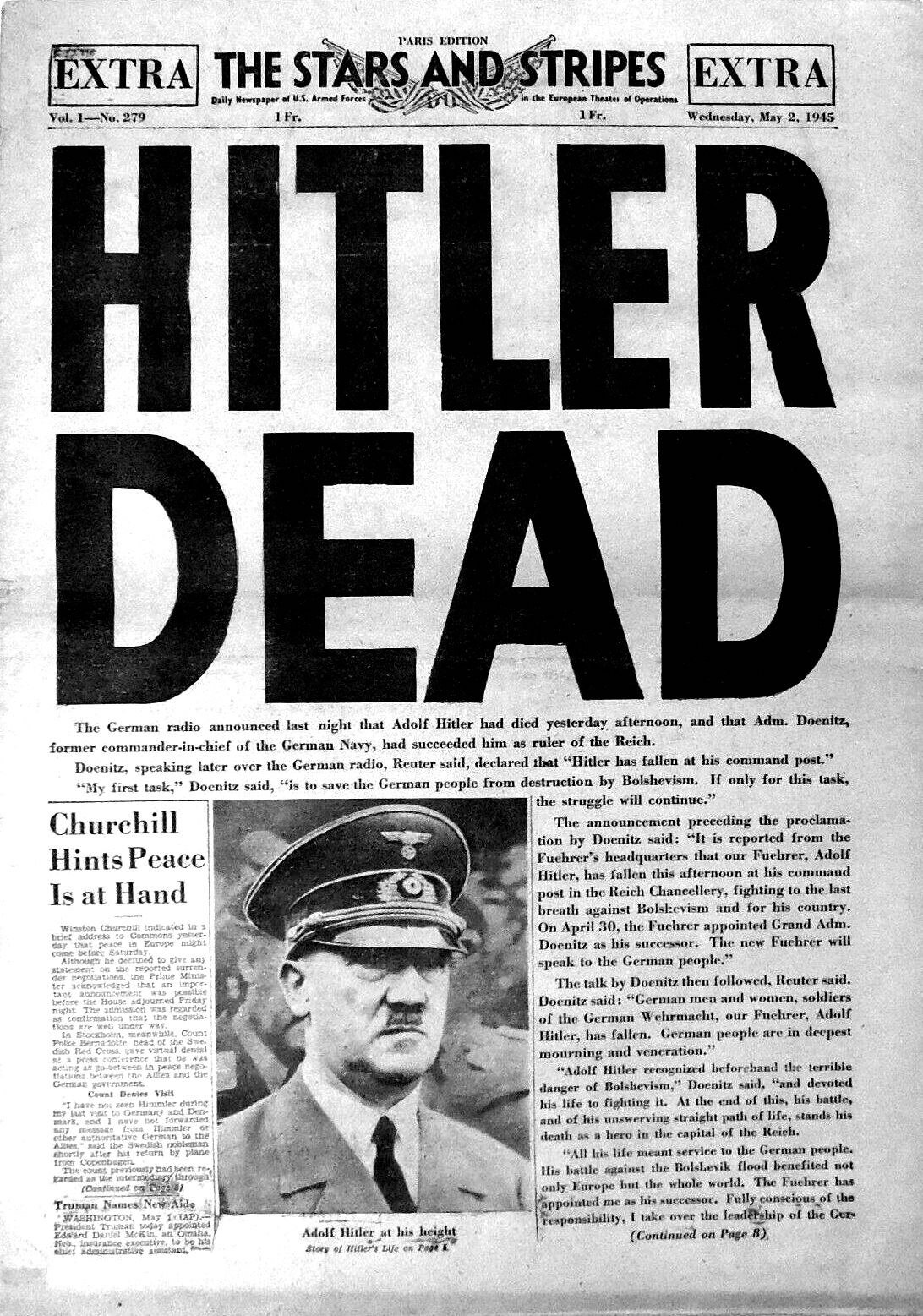 American historians have finally disproved the official explanation of Hitler’s death, by proving that the skull with a bullet hole found by Russians in 1946, actually belonged to a woman.
American historians have finally disproved the official explanation of Hitler’s death, by proving that the skull with a bullet hole found by Russians in 1946, actually belonged to a woman.
July 22, 2015 by Sean Adl-Tabatabai ![]()
DNA analyses on the skull performed by the University of Connecticut have shocked scientists, and have left experts debating whether Hitler survived and escaped Germany as many popular ‘conspiracy theories’ suggest.
The Guardian reports: According to Connecticut archaeologist and bone specialist Nick Bellantoni, it was clear from the outset that something was amiss. “The bone seemed very thin; male bone tends to be more robust,” he said. “And the sutures where the skull plates come together seemed to correspond to someone under 40.” In April 1945 Hitler turned 56.
Bellantoni had flown to Moscow to inspect the gruesome Hitler trophies at the State Archive, which included the skull fragment as well as bloodstains from the bunker sofa on which Hitler and Braun were believed to have committed suicide. He was allowed only one hour with the Hitler trove, during which time he applied cotton swabs and took DNA samples. “I had the reference photos the Soviets took of the sofa in 1945 and I was seeing the exact same stains on the fragments of wood and fabric in front of me, so I knew I was working with the real thing.”
The samples were then flown back to Connecticut. At the university’s centre for applied genetics, Linda Strausbaugh closed her lab for three days to work exclusively on the Hitler project. “We used the same routines and controls that would have been used in a crime lab,” she said. To her surprise, a small amount of viable DNA was extracted. She then replicated this through a process known as molecular copying to provide enough material for analysis. “We were very lucky to get a reading, despite the limited amount of genetic information,” she said.
The result was extraordinary. According to witnesses, the bodies of Hitler and Braun had been wrapped in blankets and carried to the garden just outside the Berlin bunker, placed in a bomb crater, doused with petrol and set ablaze.
But the skull fragment the Russians dug up outside the Führerbunker in 1946 could never have belonged to Hitler. The skull DNA was incontestably female. The only positive physical proof that Hitler had shot himself had suddenly been rendered worthless. The result is a mystery reopened and, for conspiracy theorists the tantalising possibility that Hitler did not die in the bunker.
For decades after the war the fate of Hitler’s corpse was shrouded in secrecy. No picture or film was made public. As the Soviet Army secured control of Berlin in May 1945, Russian forensic specialists under the command of the counterintelligence unit Smersh (an acronym for “Death to Spies”) dug up what was presumed to be the dictator’s body outside the bunker and performed a post-mortem examination behind closed doors. A part of the skull was absent, presumably blown away by Hitler’s suicide shot, but what remained of his jaw coincided with his dental records, a fact reportedly confirmed when the Russians showed his surviving dental work to the captured assistants of Hitler’s dentist. The autopsy also reported that Hitler, as had been rumoured, had only one testicle.
But Stalin remained suspicious. In 1946 a second secret mission was dispatched to Berlin. In the same crater from which Hitler’s body had been recovered, the new team found what it believed was the missing skull fragment with a bullet exit wound through it. The Russians also took fragments of Hitler’s bloodstained sofa.
Even this failed to satisfy Stalin, who clamped a secrecy order on all matters related to Hitler’s death. Unknown to the world, Hitler’s corpse was interred at a Smersh centre in Magdeburg, East Germany. There it remained long after Stalin’s death in 1953. Finally, in 1970, the KGB dug up the corpse, cremated it and secretly scattered the ashes in a river. Only the jawbone, the skull fragment and the bloodstained sofa segments were preserved in the deep archives of Soviet intelligence. The bunker was destroyed in 1947 and eventually paved over. Then, in 2000, the Russian State Archive in Moscow staged an exhibition, The Agony of the Third Reich. The skull fragment was displayed, but only photographs of Hitler’s jawbone were on view. The head of the archive, Sergei Mironenko, said he had no doubt the skull fragment was authentic. “It is not just some bone we found in the street, but a fragment of a skull that was found in a hole where Hitler’s body had been buried,” he said.
In the wake of Bellantoni and Strausbaugh’s findings, Mironenko’s confidence was clearly misplaced. But could the fragment of skull belong to Eva Braun, who died at 33 and was laid alongside her beloved Führer in the same crater? “We know the skull corresponds to a woman between the ages of 20 and 40,” said Bellantoni, but he is sceptical about the Braun thesis. “There is no report of Eva Braun having shot herself or having been shot afterwards. It could be anyone. Many people were killed around the bunker area.”
Sixty-four years later, the world is still in the dark about what really happened in Hitler’s bunker on 30 April 1945.


